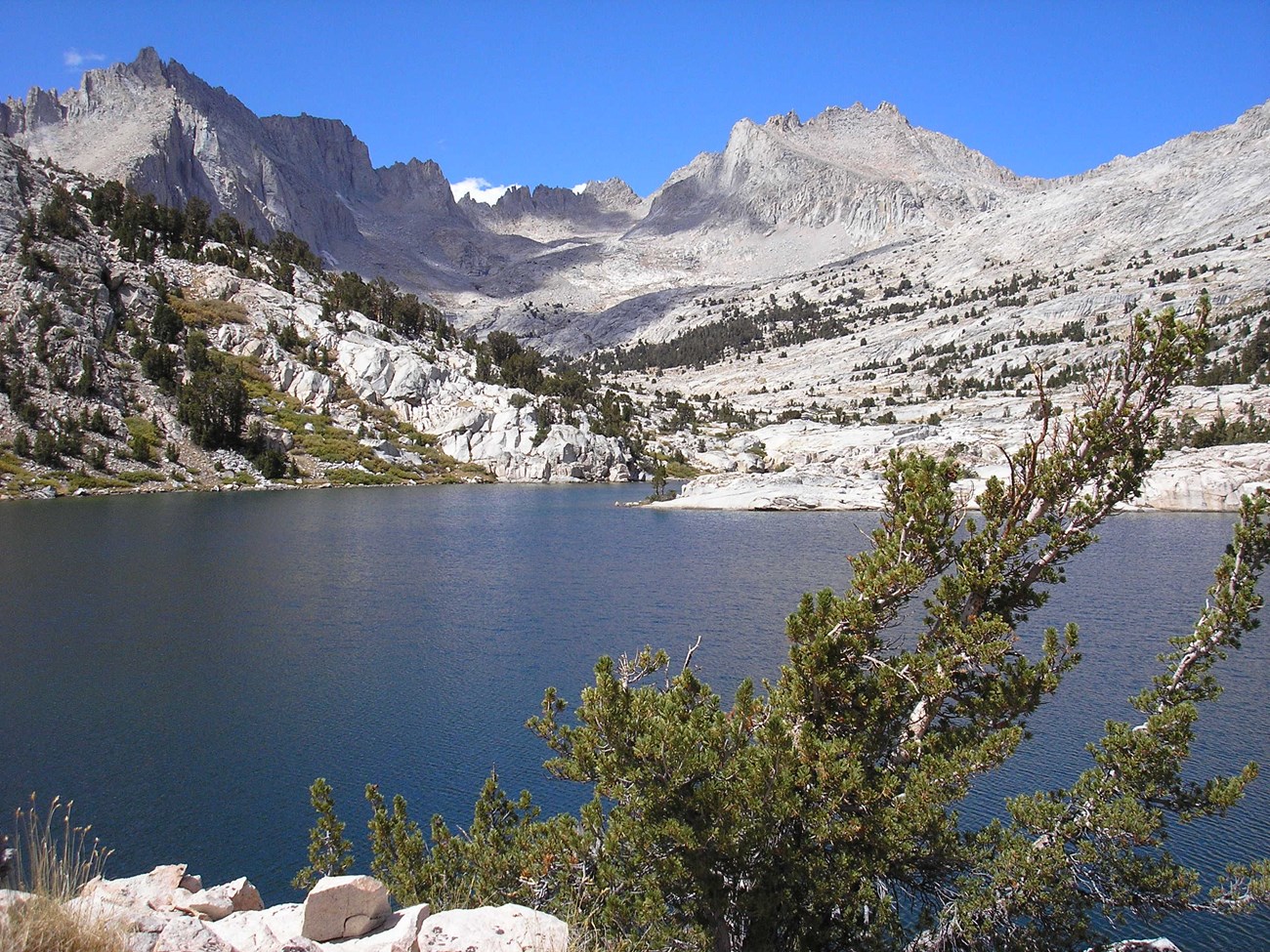
Photo by: Bob Meadows These parks contain nearly 3200 lakes and ponds, and most are located at high elevations (above 8,000 feet, or 2500 m). Sierra Nevada lakes are chemically dilute and low in nutrients due to the high-elevation settings where they occur, with shallow soils and sparse vegetation. Despite the low productivity, these lakes still support a variety of plants and animals. Aquatic wildlife include amphibians, fish (primarily non-native), invertebrates, zooplankton, and micro-crustaceans. Terrestrial wildlife also rely on lakes for food. Mountain garter snakes, several species of birds, bats, and occasionally coyotes will feed on insects and amphibians. Lakes are popular visitor destinations and provide recreational opportunities including camping, fishing, hiking, photography, and horseback riding. Nearly all of the parks' lakes are located within wilderness; these ecosystems contribute to the value of protected areas and their wilderness character. While these lakes are within the boundaries of national parks and wilderness, they still face numerous threats. The Sierra Nevada mountains are exposed to air pollution that originates from agricultural, urban, and industrial sources in California and even and as far away as Asia. Nutrients and other pollutants are transported by air currents into the Sierra Nevada where they are deposited with rain, snow, and dry particles. Excess nutrients from air pollution increase algal growth, which reduces the clarity of the clear, blue mountain lakes. Changes in nutrients and algae may also have cascading effects on the larger lake food web. Nonnative fish are a major factor in the steep declines of both yellow-legged frog species, which are now federally endangered. Numerous monitoring and research projects have focused on water quality in Sierra Nevada lakes to better understand and protect these places. To learn more, you can visit the following web pages:
Learning More About Lakes |
Last updated: September 11, 2019
